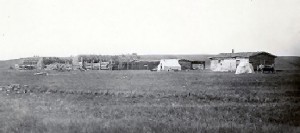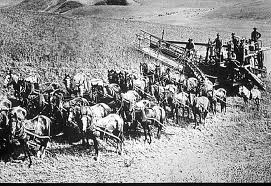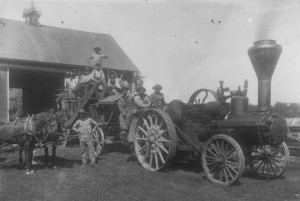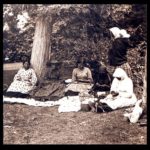When farmers began to look at the benefits of mechanization in the early part of the 20th century, most realized that any real labor and cost savings would have to take place on large farms. Thomas Campbell believed wholeheartedly in the benefits of large-scale, mechanized farming, and wanted to prove it. During WWI, he wanted to sow huge quantities of wheat on land that Indians weren’t using.
Campbell wrote to various government officials without much success, but finally convinced President Woodrow Wilson that the country could benefit from his idea. Frank Thackery, a supervisor in the Indian Office, met Campbell and showed him around various reservations. Thackery suggested Campbell farm about 200,000 acres, about ten times what Campbell had originally envisioned. The Commissioner of Indian Affairs approved leases on Crow, Blackfeet, and Fort Peck reservations.
Campbell did not have to pay taxes or interest on this land, since the land was federally owned. Thackery wanted Campbell to pay Indians in grain, as a share of the crop, but many Indians preferred money. Campbell paid them 50 cents an acre for the first two years of the lease, then 75 cents an acre the third year, and finally a dollar an acre in the fifth year. He also bought land off Indians for $3 – $4 an acre. No one made much money, including Campbell, but he would have undoubtedly failed immediately without his favorable leases on reservation property.
______________________________________________________________________________________








